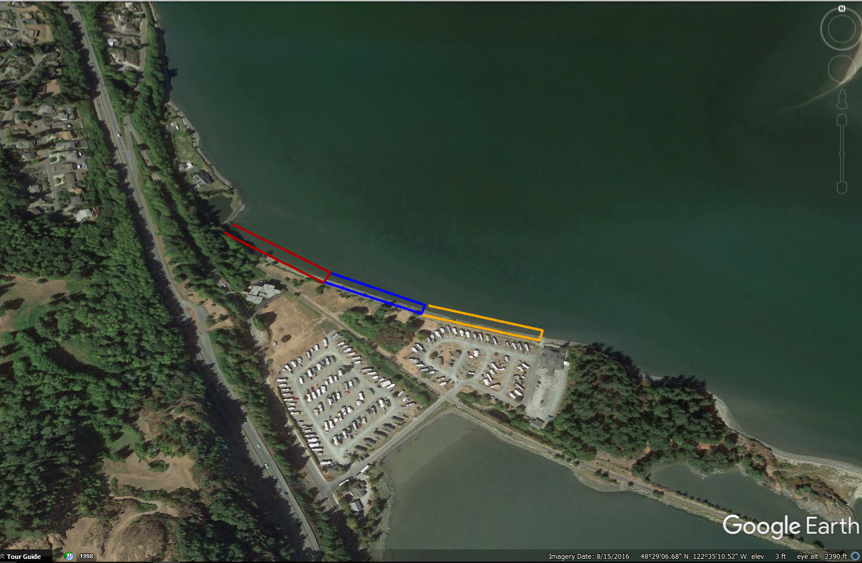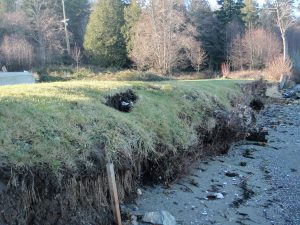When I was applying to graduate programs, one of the things that drew me to the Nicholas School was the opportunity to earn a certificate in community-based environmental management. Broadly defined, community-based environmental management is the process through which communities are empowered to improve their local environment: ecologically, economically and socially. It’s a topic that I’ve long been interested in, and I’ve enjoyed the opportunity to gain some techniques for bringing this practice to the communities I hope to work with in the future.
While I was at the Restore America’s Estuaries conference in December, I had the pleasure of listening to a talk by Todd Woodard, director at the Department of Natural Resources for the Samish Indian Nation. Woodard recounted the process by which the Tribe converted three portions of waterfront into living shorelines to prevent further erosion of a culturally-important site and protect against flooding from future storms. His presentation was a great case study of community-based environmental management at work, and Woodard was kind enough to answer a few questions for this blog.

Q: Who is the Samish Indian Nation? What is their connection to the ocean?
The Samish Indian Nation is a Coast Salish Tribe located in the Northern Puget Sound portion of the Salish Sea. While Administrative headquarters is located in Anacortes, Washington, Samish traditional territory also includes the San Juan Islands. Samish culture, like other Coast Salish Peoples, is intimately tied to the sea and its abundant natural resources. For hundreds of generations, large dugout canoes, often carrying 12 or more people and supplies, were the mode of transportation in this area. Harvest of clams, salmon and other sea resources provide sustenance and traditional foods today, as with those that came before. There is a common saying in the area: “When the tide is out, the table is set!”

Q: What prompted the living shorelines restoration at Weaverling Spit Beach?
Weaverling Spit in Fidalgo Bay, Washington, is owned by the Samish Nation. It is a culturally-significant area as well as the location of the RV park owned and operated as a business unit of the Tribe. Increasingly-frequent and damaging storms caused significant erosion into the cultural sites, and also put the RV park at risk of flooding. In addition, the erosion combined with hard armoring was harming the clam resources and forage fish spawning habitat that Fidalgo Bay is known for. We wanted to restore natural processes using soft shore techniques to revitalize the area and protect tribal resources.
Q: For those who may be unfamiliar with the term, what is a living shoreline? How do living shorelines in the Pacific Northwest differ from those we may be used to on the East Coast?
Here in the Pacific Northwest, we tend to view living shorelines as natural shorelines that are not hard armored. Our natural beaches are normally pebble/gravel in nature and naturally armored with driftwood and forest vegetation. Other than anchoring driftwood in place, there is very little engineered structure on our living shoreline restoration projects which I am learning is a significant difference to other coasts in the U.S.
Q: Given that you were working with the Samish community, what additional factors did you have to take into consideration? How did the tribe get involved in this process?
The natural resources of the Salish Sea and connection to place are part of the Samish Cultural Identity. We are taught to think seven generations into the future by tribal elders. This means we are working to preserve natural and cultural use resources for our great, great, great, great, great, great grandkids. Samish DNR is privileged to have a deep connection with our Chela´ngen (cultural) department, which gives us access to tribal elders and traditions that can inform the work that we do. For example, this can manifest itself in promoting the incorporation of traditional use plants into restoration projects.
Q: How has the project been received by the community?
The project is very accessible to the community at large. It is heavily utilized for education and outreach to other communities considering this type of project, and it is used to advocate for soft shore techniques over hard armoring. We also give tours to local groups and schools interested in this type of work and the beaches are monitored by citizen scientists for biological parameters such as forage fish use, etc. It is very well received by both the Samish and surrounding communities.
Q: What were some of the signs that this project was successful?
We have weathered several severe storm events with large waves and the natural beaches have absorbed that energy with very little visible erosion. The natural gravel beaches have moved and adjusted just like unaltered reference beaches in the area. Forage fish egg monitoring also shows that the new beaches are being heavily utilized by surf smelt. In fact, on the very day that we finished Phase 1 of the project, we observed surf smelt spawning on the new beach!
Special thanks to Todd Woodard and the Samish Indian Nation Department of Natural Resources for working with me to write this blog!



Very proud of the tribal nations in the Puget Sound area. We have much to learn from them!